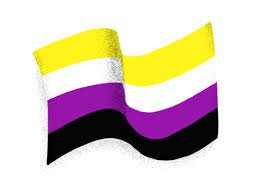
People often, mistakenly, believe that grief only occurs when someone has died. But grief is a perfectly normal and human response to any kind of loss. Yet conversations around loss are often uncomfortable and awkward, or non-existant. It is time to get braver about grief. to get comfortable, with the uncomfortable and create work cultures moulded towards a common human experience.
In the wake of the Covid 2019 global pandemic, employees are, years later, still dealing with the after-effects of isolation, fear, uncertainty, illness, death
As the saying goes,
“Every change is experienced as loss. And every loss needs to be grieved.”
As a collective, we have had so much change, so much loss, but have we made space for “so much grief”?
Not really. And in some cases, not at all.
But what happens in the workplace when losses don’t get acknowledged and grieved? What does (hidden) grief do to employees experiencing it? How can companies respond meaningfully to the collective grief that many staff may likely be experiencing?
It is well known that grief can cycle through stages, with common reactions including shock, disbelief, denial, anger, guilt, and/or sadness. BUT there is no linear, step by step, order which a grieving person passes through. Grief is also highly individual—some people cry, some do not, others have difficulty concentrating, difficulty sleeping, or experience changes in eating habits. It will show up in different ways or take on different forms, so much so that you not even realise it is grief.
“I sat with my anger long enough until she told me
her real name was grief.”
CS Lewis
Unacknowledged grief is a painful and isolating experience. It can also be costly to companies who may lose good staff, need to spend more on temporary solutions and lose project momentum as teams are constantly reshuffled.
So, how can corporates create work environments that understand and support employees through periods of grief, instead of adding to any trauma and loss they already feel?
You can’t change what you can’t name. For employees to share that they are struggling, they need evidence that not only is that possible within an organisation but that it is also welcomed. This is message is best communicated when leaders themselves do the same – when they are honest with staff about their own periods of struggle and stress. An embodied example from a colleague will do more to empower authenticity at work, than any well written employee handbook could.
Of course, there are boundaries – leaders and colleagues should not be expected to solve the employee’s personal problems. The goal of authentic leadership is to open the door to sharing about loss/grief which in turn can open the door to make necessary adjustments.
One of the three things grieving employees need, whether their grief is acknowledged or not, is flexibility.
Flexibility at work allows employees to have more agency around their time and energy so they can work within the grief process, not against it. And since increased agency at work is beneficial to employee general sense of building flexibility into standard working practice will benefit everyone, not just those going through periods of grief.
This might be flexibility might include
A flexible working culture also promotes pulling together to complete work and emphasizes collaboration over colleague competition.
Grief doesn’t usually stick to a particular timeline. And it certainly doesn’t respect working hours. Grief can (and often does) still show up weeks, months or even years after an employee experiences loss. In fact, annually recurring events and moments (birthdays, anniversaries etc) can be big grief triggers for employees who may feel like they are experiencing the loss all over again.
By normalizing check-ins, employees can honour their own grief timeline and leaders and managers don’t have to keep an anxious watch over staff but trust that employees will share as needed. And this also support managers and employees develop authentic human centered working relationships.
Grief allows us to collectively cope with the continuous trauma that humans face on both personally and on a global scale. Supporting grief and loss is fundamental for employers to create genuinely safe and human centered office cultures. When loss is not validated and grief goes unrecognised, employees are denied access to support or helpful adjustments at work. And they may start to feel burn out amidst the pressure to just ‘move on and carry on’.
Through clear HR policy around grief and loss, embodied authentic leadership and a flexible human centered approach at work, employees will feel seen and supported. And a culture of collaboration and innovation is more likely to develop. All of which is essential to support employee wellbeing and company success.
Loss is experienced in many shapes and forms, yet often only the death of a family member will unlock Bereavement Leave and support.
